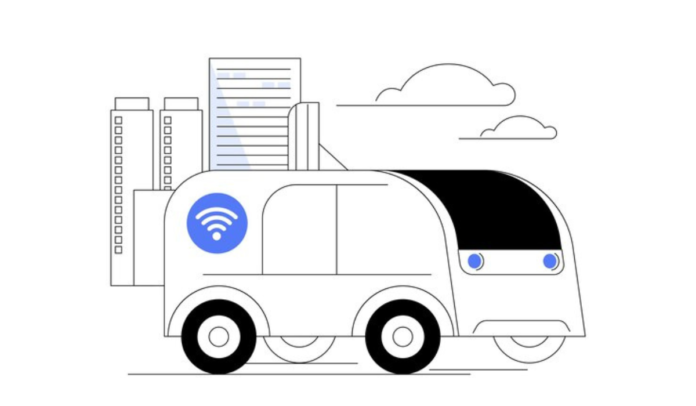In an era defined by rapid technological advancement, the automotive industry is undergoing a transformation with the integration of 5G connectivity into modern vehicles. From enhanced safety features to immersive entertainment experiences, 5G technology promises to revolutionize the driving experience, paving the way for smarter, more connected vehicles. In this comprehensive guide, we delve into the latest developments in 5G connectivity for modern vehicles, exploring its capabilities, benefits, and potential impact on the automotive landscape.
1. Introduction to 5G Connectivity in Vehicles
The introduction of 5G connectivity in vehicles represents a significant milestone in automotive innovation, enabling seamless communication between vehicles, infrastructure, and the broader ecosystem. With its ultra-fast speeds, low latency, and high reliability, 5G technology promises to unlock a myriad of capabilities and use cases that enhance safety, convenience, and entertainment for drivers and passengers alike.
2. Key Features and Capabilities of 5G Connectivity
5G connectivity offers a range of features and capabilities that differentiate it from previous generations of wireless technology, including:
- Ultra-Fast Speeds: 5G networks deliver significantly faster data speeds compared to 4G LTE, enabling quick downloads, seamless streaming, and real-time communication.
- Low Latency: 5G networks boast ultra-low latency, reducing the delay between sending and receiving data packets, which is crucial for time-sensitive applications such as autonomous driving and vehicle-to-vehicle communication.
- High Reliability: 5G networks are designed to provide high reliability and availability, ensuring consistent connectivity even in congested urban areas or challenging driving conditions.
- Massive Connectivity: 5G networks support a massive number of connected devices per unit area, facilitating the proliferation of Internet of Things (IoT) devices and smart infrastructure in the automotive ecosystem.
3. Applications of 5G Connectivity in Vehicles
The integration of 5G connectivity opens up a wide range of applications and use cases in modern vehicles, including:
- Connected Navigation: 5G connectivity enables real-time updates to navigation systems, including traffic information, road conditions, and point-of-interest data, providing drivers with accurate and up-to-date guidance.
- Vehicle-to-Vehicle (V2V) Communication: 5G enables vehicles to communicate with each other in real-time, sharing information about their speed, direction, and proximity, which enhances safety and enables cooperative driving scenarios.
- Vehicle-to-Infrastructure (V2I) Communication: 5G connectivity allows vehicles to communicate with roadside infrastructure, such as traffic lights and road signs, enabling intelligent transportation systems that optimize traffic flow and enhance driver awareness.
- In-Car Entertainment: With 5G connectivity, vehicles can stream high-definition video, music, and other multimedia content from the cloud, providing passengers with a personalized and immersive entertainment experience on the go.
4. Enhanced Safety Features with 5G Connectivity
5G connectivity has the potential to revolutionize automotive safety by enabling advanced driver assistance systems (ADAS) and vehicle-to-everything (V2X) communication. Some safety features empowered by 5G connectivity include:
- Collision Avoidance: Vehicles equipped with 5G connectivity can exchange information about their speed, position, and trajectory in real-time, enabling collision avoidance systems to alert drivers and take evasive action to prevent accidents.
- Emergency Assistance: In the event of an accident or emergency, 5G connectivity allows vehicles to automatically transmit distress signals and location information to emergency services, facilitating faster response times and potentially saving lives.
- Traffic Management: 5G-enabled traffic management systems can analyze real-time traffic data and adjust traffic signals, lane configurations, and speed limits to optimize traffic flow and reduce congestion, improving safety and efficiency on the road.
5. Overcoming Challenges and Considerations
While 5G connectivity holds immense promise for the automotive industry, several challenges and considerations must be addressed to realize its full potential:
- Infrastructure Deployment: The widespread rollout of 5G infrastructure is essential to ensure consistent coverage and connectivity, especially in rural or remote areas where network coverage may be limited.
- Security and Privacy: Protecting vehicle data and communication networks from cyber threats and unauthorized access is critical to safeguarding driver and passenger safety and privacy.
- Regulatory Compliance: Compliance with regulations and standards governing the use of wireless technology in vehicles, such as spectrum allocation and radio frequency emissions, is necessary to ensure interoperability and safety.
FAQs (Frequently Asked Questions)
Q: Can older vehicles be retrofitted with 5G connectivity?
A: While some aftermarket solutions may offer the ability to retrofit older vehicles with 5G connectivity, the integration of 5G technology is typically incorporated into new vehicle models during the manufacturing process.
Q: How does 5G connectivity improve autonomous driving capabilities?
A: 5G connectivity enables real-time communication between autonomous vehicles, allowing them to share sensor data, coordinate maneuvers, and anticipate potential hazards, which enhances their ability to navigate complex driving environments safely.
Q: Are there any health concerns associated with prolonged exposure to 5G radiation in vehicles?
A: Extensive scientific research has found no evidence of adverse health effects from exposure to 5G radiation within established safety limits. Regulatory bodies such as the World Health Organization (WHO) and the Federal Communications Commission (FCC) monitor and assess the safety of wireless technology to protect public health.
Conclusion
5G connectivity is poised to revolutionize the automotive industry, offering a multitude of benefits that enhance safety, convenience, and entertainment for drivers and passengers. From connected navigation and vehicle-to-vehicle communication to advanced safety features and immersive entertainment experiences, 5G technology transforms the driving experience and paves the way for smarter, more connected vehicles. As 5G networks continue to expand and evolve, stakeholders must collaborate to address challenges, ensure interoperability, and harness the full potential of 5G connectivity to create a safer, more efficient, and enjoyable driving environment for all.


